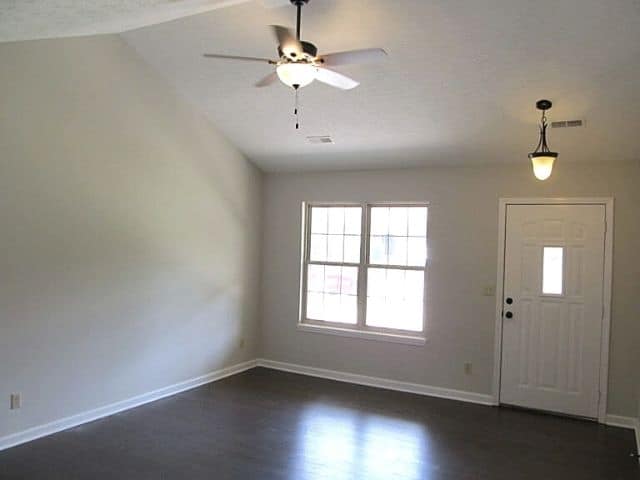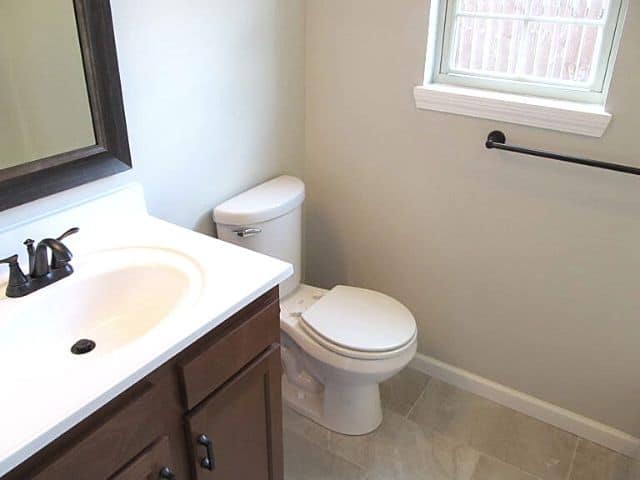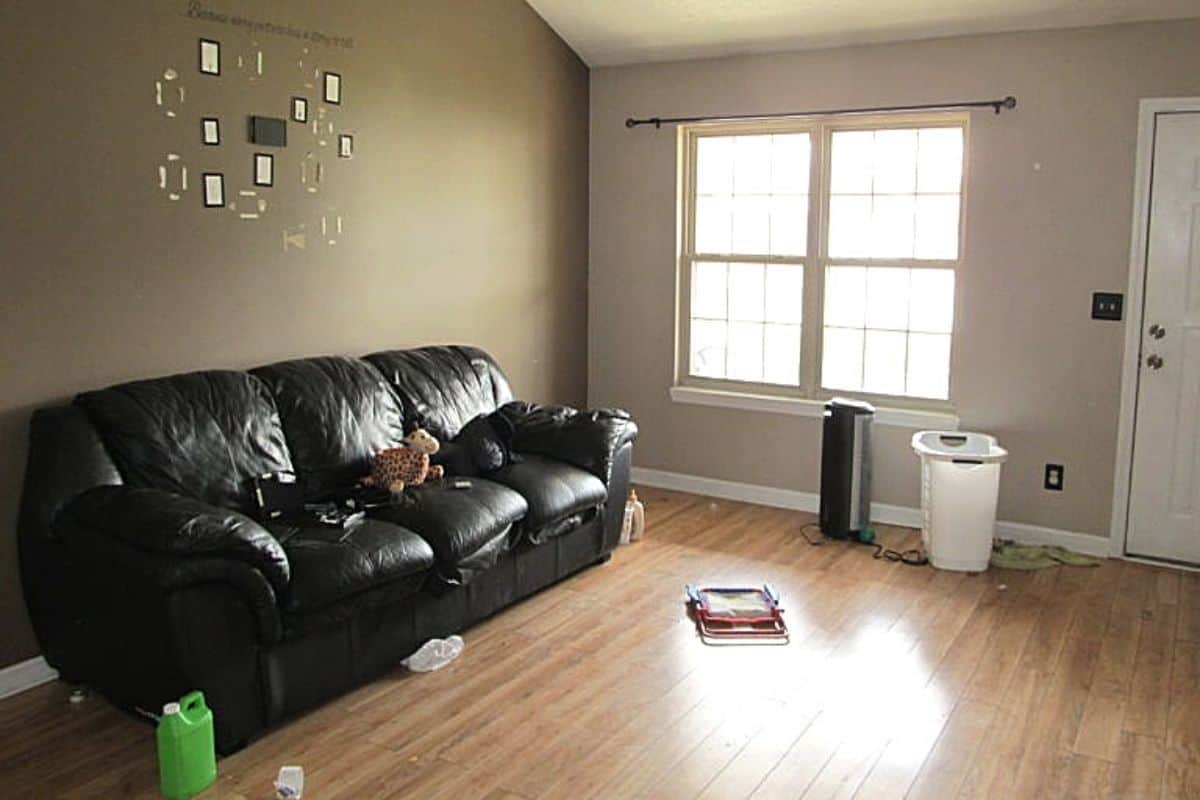While many would-be real estate investors think you need hundreds of thousands of dollars to a flip house, you often don’t need anywhere near this kind of money, when you use leverage or OPM (other people’s money).
But is there a minimum amount of money you do need to flip a house, for example, can you flip a house with $20,000?
If you only have $20,000 to invest in a real estate flip, it’s possible to flip a house but you will need to use leverage and outside funding in order to provide the necessary capital needed.

How to Flip a House with Only $20,000
As a house flipper in the Midwest that has now completed 16 house flips.
I can assure you that it’s more than possible to flip a house with $20,000 or less, because every house flip that I’ve completed to date, I’ve done so with less than $20,000.
But that doesn’t mean that you only need $20,000 to flip a house because house flips no matter where you live in the country, will always require more capital than $20,000 to complete.
Finding Capital for House Flips When You Only Have $20,000
There are four main places to find capital to flip a house when you don’t have the necessary funds yourself, which include private money, hard money loans, secured and unsecured lines of credit, and traditional home loans.
Private Money
Private money can take many forms but in most cases, the best way to obtain private money is to partner with a real estate investor.
Which by the way is how I fund the majority of my real estate flips.
There are always investors out there that are ready, willing, and able to invest in a house flip, if you can bring them a good deal and show them how you plan to flip the property.
Just make sure that if you do go this route, that everyone is on the same page by put everything in writing.
As far as who is responsible for what, who is paying for what, and how the profits will be split.

Hard Money Loans
Another funding source that many house flippers use when they lack the capital needed to flip a house, is a hard money loan.
Hard money loans are short-term asset-based loans issued by private investors or companies that primarly use the collateral of the property to secure the loan instead of the investor’s creditworthiness.
House flippers with little money of their own to invest, will often use a hard money loan because the lender is usually willing to finance 100% of the purchased price.
In addition, hard money loans can also be closed much quicker compared to traditional home loans, and usually, only require about a week to close.
Hard money loans do have some negatives though with the biggest one being cost.
As hard money loans often have very high interest charges with rates ranging from 12 to 15 percent or higher as well as high origination fees which can range from 2 to 5 points.
The other downside of hard money loans is that they very short-term loans that can require you to pay back the loan within 3 to 6 months.
And if you exceed these deadlines there are often very stiff penalties and fees which can add even more cost to an already expensive loan.

Secured and Unsecured Lines of Credit
Secured and unsecured lines of credit such as a home equity line and even credit cards can also be used to fund at least some of the costs associated with a house flip.
This form of funding can be very risky though and should only be used as a last resort or to fund a very small portion of the house flip.
As these secured and unsecured lines of credit come with a lot of personal liability.
So if the house flip were to go wrong, which can and does happen, it could have a big impact on you and your family’s financial stability.
Traditional Home Loans
While most people would never consider a traditional home loan such as a conventional or FHA loan, as a viable source of funding for a house flip, in actuality many people can and do use these loans to flip houses.
This is because these types of traditional loans often require a very small down payment, which can be as low as 5% for a conventional loan and as low as 3.5% on an FHA loan.
Making them a great way to fund a house flip, if you have limited funds to invest.
But there are some downsides to using these types of loans to flip a house with one being how much they slow down the process of a house flip.
As traditional home loans will often take anywhere from 30 to 45 days to close.
And often have funding restrictions, as is the case with FHA loans, that require you to live in the home for at least one year as your primary residence before you can sell the property.
In addition, unlike hard money loans that primarily use the equity of the property as the collateral for the loan, traditional home loans rely heavily on the creditworthiness of the home buyer and often require a credit score of at least 580 or 620 depending on the type of loan.
If you’re looking for more information on how to flip a home using a traditional home loan, check out our article “2 Year Flip Strategy: How to Flip the Home You Live In“.

Where to Spend $20,000 on a House Flip
If you only have $20,000 to invest in a house flip, it’s very important to make sure you spend that $20,000 where it will have the biggest impact.
So where is the best place to spend $20,000 when flipping a house?
If you just have $20,000 to invest in a house flip, its best to use other peoples money for the purchase of the house, so that you can use your $20,000 for either a small down payment, rehab costs, or carrying costs of the flip.

And as a house flipper that usually invests less than $20,000 in a house flip, I can tell you that these are exactly the things that I spend my money on.
As I primarily use my own capital on either property rehab costs or carrying costs associated with the flip, which include things like utility bills, homeowners insurance, and property taxes.
Can I buy a property with $20,000?
While there are many areas in the country, where you can buy a property for $20,000 or less, including right here in the Midwest, as a real estate investor, I usually steer clear of these low-cost properties.
Why You Shouldn’t Buy a Property that Costs $20,000 or Less as a House Flipper
- One of the main reasons why these properties are priced so low is because they are almost always in undesirable areas, which will greatly reduce your buyer pool for the property and make it more difficult to sell.
- Because homes are appraised using the homes directly around the property, it’s more challenging to sell a flip for top dollar in a lower-priced area, as the comps in the area will always pull the price of your flip-down, no matter how nice you make it.
- Low-cost properties are often in unsafe and high-crime areas, which can make the rehab of the property more difficult and costly due to the higher chance of break-ins and vandalism.
- Houses that are priced super cheap, often have extensive property condition issues and deferred maintenance items, which can be very costly and expensive to repair.

How Much Money Do You Need to Flip a House?
Now that you’ve seen that it’s completely possible to flip a house with $20,000, you might be wondering if there is actually any limit at all to the amount of money you need to flip a house?
The truth of the matter is that it’s actually possible to flip a house with no money using many of the principles mentioned in this article on how to flip a house with $20,000.
As the techniques used to flip a house with $20,000, will actually work with far less and even potentially no money.
However, as a word of caution, while it technically is possible to flip a house with no money, in general, it’s usually not a good idea, because it puts you in a very vulnerable and precarious place with no margin for error when flipping.
As things can and do go wrong when flipping houses and it’s always nice to have some money to handle an unexpected expense or a rough spot in the flip.
With that being said though I do think that it’s definitely possible to flip a house with only $10,000.
To see how to flip a house with only $10,000, check out our article “How to Flip a House with Only $10,000“.

Recent Posts
How much does a push lawn mower cost? This is a question that many people have when they're looking for a new lawn mower. The good news, however, is that push lawn mowers are one of the most...
Are you looking for a cheap lawn mower? If so, you've come to the right place! Because in this blog post, we've highlighted the 10 cheapest lawn mowers on the market today. Plus, we provide...

